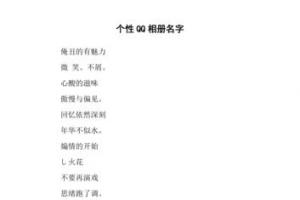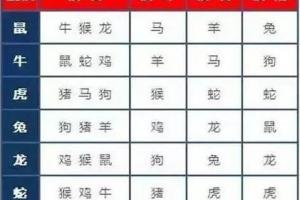本篇文章给大家谈谈企业会计准则解释第2号,以及企业会计准则解释第2号BOT对应的知识点,希望对各位有所帮助,不要忘了收藏本站喔。
本文目录一览:
- 1、保险公司新会计准则
- 2、2007年新会计准则有多少条
- 3、企业会计准则解释第2号 谁有英文翻译稿
- 4、我国企业会计准则体系的组成内容包括哪些
- 5、保险公司关于重大事项报告规则执行情况
保险公司新会计准则
企业会计准则。2008年8月7日,财政部印发了《企业会计准则解释第2号》(以下简称“《2号解释》”),要求境内外上市保险公司对同一交易事项采用相同的会计政策和会计估计进行确认、计量和报告。经商财政部,现就保险业执行《2号解释》的有关事项通知如下:
一、《2号解释》总体实施要求
(一)《2号解释》的总体实施方案是“统一执行,一步到位”。“统一执行”是指所有保险公司,无论是否在境内、境外上市,均执行新的统一的会计政策;“一步到位”是指保险公司在编制2024年年度财务报告时,对目前导致境内外会计报表差异的各项会计政策同时进行变更。
(二)包括境内、境外上市保险公司在内的所有保险公司,编制2024年年度境内、境外财务报告时应遵循以下会计政策:
1、保费收入的确认和计量引入重大保险风险测试和分拆处理;
2、保单获取成本不递延,计入当期损益;
3、采用新的基于最佳估计原则下的准备金评估标准。
重大保险风险测试标准、保费分拆标准、新准备金评估标准另行发布。在上述新标准发布实施前,各公司暂按目前会计政策核算,待新标准实施后,再对以前年度数据进行追溯调整。
(三)在境内外同时上市的保险公司,除上述报表差异外,其它报表项目存在的差异,原则上也应按《2号解释》的要求,对同一交易事项采用相同的会计政策和会计估计,消除境内外会计报表的差异。
扩展阅读:【保险】怎么买,哪个好,手把手教你避开保险的这些"坑"
2007年新会计准则有多少条
2007年新会计准则有50条,归纳如下:
一、无形资产准则
该准则对无形资产的确认、计量、摊销、减值、处理和报废、披露等方面作了规范。与现行会计制度比较,主要增加或修订了以下内容:
1、关于无形资产的计量。(1)准则明确,通过非货币性交易换入或债务重组取得的,应按非货币性交易准则或债务重组准则的规定予以确定。(2)对于投资者投入的,应以投资各方确认的价值计价;但企业为首次发行股票而接受投资者投入的,以该无形资产在投资方的账面价值计价。而现行《股份有限公司会计制度》规定按评估确认价值计价:其他企业会计制度规定被评估确认或者合同、协议约定的金额计价。(3)对于接受捐赠的,准则明确,如捐赠方提供有关凭据,按凭据上标明的金额加应支付的相关税费确定;如捐赠方没有提供有关凭据的,按如下顺序确定:同类或类似无形资产存在活跃市场的,应参照同类或类似无形资产的市场价格估计的金额加支付的相关税费确定;不存在活跃巾场的,按该上形资产的预计未来现金流量现值加支付的相关税费确定。此内客现行企业会计制度未作明确,而企业财务制度规定按照发票帐单所列金额或者同类无形资产市价计价。(4)对于自行开发并依法申请取得的,准则规定按依法取得时发生的注册费、律师费等费用确定;依法申请取得前发生的研究与开发费用,应于发生时确认为当期费用。这与《股份有限公司会计制度》的规定相同;而现行企业财务制度规定是按照开发过程
中的实际支出计价。(5)明确了无形资产在确认后发生的支出,应在发生时确认为当期费用。
2、关于无形资产的摊销。准则明确,无形资产的成本,应自取得当月起在预计使用年限内分期平均摊销。对于预计使用年限超过了相关合同规定的受益年限或从法律规定的有效年限,其摊销年限的确定原则与《股份有限公司会计制度》现行企业财务制度基本相同。
3、关于无形资产减值。这是准则新规定的内容,企业应定期至少于每年末对无形资产的账面价值进行检查,如发现以一种或数种情况,应对其可收回金额进行估计,并将账面价值超过可收回金额的部分确认为减价准备:(1)该无形资产已被其他新技术等所代替,使其为企业创造经济利益的能力受到重大不利影响;(2)该无形资产的巾价在当期大幅下跌,在剩余摊销年限内预期不会恢复;(3)其他足以表明该无形资产的账面价值己超过可收回余额的情形。计提减值阶备后,只有表明无形资产发生减值的迹象全部或部分消火,企业才能将以前年度已确认的减值损失予以全部或部分转回;转回的金额不得超过已计提的减值准备的账面余额。
4、关于无形资产处置和报废。(1)对于出租和无形资产所取得的租金收入,应按收入准则确认;(2)当无形资产预期不能为企业带来经济利益时,企业应将无形资产的账面价值予以转销。其情形主要包括该无形资产已被其他新技术等所代替,或者无形资产不再受法律的保护,且均已不能为企业带来经济利益;(3)企业进行房地产开发时,应将相关的土地使用权账面价值一次计入房地产开发成本。
5、关于信息披露。企业应当披露下列与无形资产有关的信息:(1)各类无形资产的摊销年限;(2)各类无形资产当期期初和期末帐目余额、变动情况及其原因;(3)当期确认的无形资产减值准备。对于土地使用权还应披露土地使用权的取得方式和取得成本。
6、关于衔接办法。对于该准则施行之日前取得的无形资产,除减值准备的提取应追溯调整外,其余不作追溯调整。
二、借款费用准则
该准则主要是对为购建固定资产而专门借款所发生的利息、折价或溢价的摊销和汇兑差额予以资本化进行规范。
1、关于开始资本化的条件。准则规定,以下三个条件同时具备时,应当开始资本化:(1)资产支出已经发生;(2)借款费用已经发生;(3)为使资产达到预定可使用状态所必要的购建活动己经开始。现行会计制度未作类似的规定。
2、关于资本化金额的确定。准则规定,在应予资本化的每一会计期间,利息的资本化金额为至当期末止购建固定资产累计支出的加权平均数乘以资本化率。累计支出加权平均数为每笔资产支出乘以每笔资产支出实际占用的天数除以会计期间涵盖无数的相加,为简化计算,也可以以月数作为计算累计支出加权平均数的权数。
资本化率的确定原则为:只有一笔专门借款的,资本化率为该坝借款的利率;一笔以上的专门借款,资本化率为这些借款的加权平均利率。如果专门借款存在折价或溢价,还应当将每期应摊销的折价或溢价金额作为利息的调整额,对资本化率作相应调整。资本化金额不得超过当期专门借款实际发生的利息和折价或溢价的摊销金额。专门借款为外币借款的,汇兑差额的资本化金额为当期外币专门借款本金及利息所发生的汇兑差额。这一规定表明,专门借款中尚未用于购建固定资产部分款项的利息不得予以资本化,这与现行会计制度的规定有所不向。
3、关于暂停资本化。准则规定,如果固定资产的购建活动发生非正常中断,并且中断时间连续超过3个月,应当暂停借款费用的资本化,将其确认为当期费用,直至资产的购建活动重新开始。但如果中断是使购建固定资产达到预定可使用状态所必要的程序,则借款费用的资本化应当继续进行。现行《股份有限公司会计制度》对此虽有相应的规定,但未明确“中断时间连续超过3个月”的时间界限;而其他企业现行会计制度则未作此项规定。
4、关于停止资本化。准则规定,当所购建的固定资产达到预定可使用状态时,应当停止其借款费用的
资本化;以后发生的借款费用应当于发生当期确认为费用。所购建固定资产达到预定可使用状态,是指资产已经达到购买人或建造为预定的可使用状态,准则对此明确了几个方面的判断标准。现行《股份有限公司会计制度》规定借款费用在固定资产交付使用后停止资本化;其他企业现行会计制度则规定借款费用在固定资产投入使用并办理竣工决算后停止资本化。
5、关于信息披露。准则规定,企业应当披露下列与借款费用有关的信息:(1)当期资本化的借款费用金额:(2)当期用于确定资本金额的资本化率。
三、租赁准则
该准则规范承租人和出租人对融资租赁和经营租赁的会计核算和相关信息的披露。
1、关于租赁的分类。租赁分融资租赁和经营租赁。满足以下一项或数项标准,应当认定为融资租赁:
(1)在租赁期届满时,租赁资产的所有权转移给承租人;
(2)承租人有购买租赁资产的选择权;
(3)租赁期占租赁资产尚可使用年限的大部分;
(4)租赁开始日最低租赁付(收)款额的现值几乎相当于租赁开始日租
赁资产原账面价值:
(5)租赁资产性质特殊,如果不作较大修整,只有承租人才能使用。
2、关于承租人的会计处理。
(1)融资租赁:①租赁开始日会计处理:以租赁开始日租赁资产原账面价值与最低租赁付款额的现值两者中较低者作为租入资产的入账价值,最低租赁付款额记录长期应付款,两者的差额记录为未确认融资费用。如租入资产占企业总资产的比例不大,可按最低租赁付款额记录租入资产和长期应付款。现行会计制度规定,融资租入固定资产是按照租赁协议或者合同确定的价款加运输费、保险费、安装调试费等计价;②未确认融资费用应当在租赁期内分期摊销,分摊方法:可以采用实际利率法,也可以采用直线法、年数总和法等;③初始直接费用处理:在租赁谈判和签订租赁合同过程中发生的、可直接归属于租赁项目的初始直接费用,如印花税、佣金、律帅费、差旅费等,应当确认为当期费用:④或有租金处理:应当在实际发生时确认为当期费用。
(2)经营租赁:经营租凭的租金应当在租赁期内的各个期间接直线法或其它更合理的方法确认为费用。
3、关于出租人的会计处理。
(1)融资租赁:①租赁开始日会计处理;以租赁开始日最低租赁收款额作为应收融资租赁款的入账价值,并同时记录未担保余值,将最低租赁收款额与担保余值之和与其现值之和的差额记录为未实现融资收益。现行会计制度规定,应收融资租赁款可采用总额法核算(包括租赁物资的实际成本、租金、手续费等),也可采用净额法核算(仅包括租赁物资的实际成本);对未实现融资收益核算仅适用于采用总额法的公司,其包括租金和利息。②未实现融资收益应当在租赁期内各个期间进工分配,分配办法应当采用实际利率法,在与按实际利率从计算的结果无重大差异的悄况下,也可以采用直线法,年数总和法等。③初始直接费用处理:应当确认为当期费用。④逾期未收租金处理:超过一个积金支付期未收到的租金,应当停止确认融资收入,其已确认的融资收入,应了冲回,转作表外核算。在实际收到租金时,将租金中所含融资收入确认为当期收入。⑤计提坏帐准备:对应收融资租赁款减去未实现融资收益的差额部分应当合理计提坏账准备。⑥对未担保余值检查处理:出租人应当定期对未担保余值进行检查,至少于每年年末检查一次。如未担保余值已经减少或如已确认损失的未担保余值得以恢复,均应当重新计算租赁内含率。⑦或有积金处理:应当在实际发生时确认为当期收入。
(2)经营租赁:经营租赁的租金应当在租赁期内的各个期间按直接法或其它更合理方法确认为收入。
4、关于售后租回交易。(1)形成融资租赁的,售价与资产账面价俏之间的奖额应予递延,并按该项租赁资产的折旧进度分摊,作为折旧费用的调整;此外,承租人和出租人应分别按融资租赁的有关规定进行会计处理。(2)形成经营租赁的,售价与资产账面价值之间的差额应予递延,并在租赁期内按照租金支付比例分摊;此外,承租人和出租人应分别按经营租赁的有关规定进行会计处理。
5、关于衔接办法。对于核准则施行之日以前已经发生的租赁业务,其会计处理与上述3一(1)?④、⑤规定不同的,应予追溯调整,其余的不作追溯调整:对于该准则施行之日以后发生的租赁业务,则应当按该准则规定进行会计处理。
四、现金流量表准则主要修订内容
1、经营活动产生的现金流易部分。(1)取消原“收到的增值税销项税额和退回的增值税款”项目,并入“销售商品、提供劳务收到的现金”项目中;(2)将原“收到的除增值税以外的其他税费返还”项目,改为“收到的税费返还”项目反映企业按规定收到的增值税、所得税等税费的返还;(3)取消原“收到的积金”项目,并入“收到的其他与经营活动有关的现金”项目中;(4)将原“支付的增值税款(后改为‘实际交纳的增值税款’)”、“支付的所得税款”和“支付的除增消税、所得税以外的其他税费”一个项目,合并为“支付的各项税费”一个项目反映;(5)取消原“经营租赁所支付的现金”项目,并入“支付的其他与经营活动有关的现金”项目中。
2、投资活动产生的现金流量部分。(1)将原“分得股利或利润所收到的现金”和“取得债券利息收入所收到的现金”两个项目,合并为“取得投资收益所收到的现金”一个项目反映;(2)将原“权益性投资所支付的现金”和“债权性投资所支付的现金”两个项目,合并为“投资所支付的现金”个项目反映。
3、筹资活动产生的现金部分。(1)将原“吸收权益性投资所收到的现金”项目,改为“吸收投资所收到的观念”项目;(2)将原“发行债券所收到的现金”和“借款所收到的现金”两个项目,合并为“取得借款所收到的现金”一个项目反映:(3)将原“分配股利或利润所支付的现金”、“偿付利息所支付的现金”两个项目,合并为“分配股利、利润和偿付利息所支付的现金”一个项目反映;(4)取消原“发生筹资费用所支付的现金”项目,分别并入“吸收投资所收到的现金”和“取得借款所收到的现金”两个项目中反映;(5)取消原“融资租赁所支付的现金”和“减少注册资本所支付的现金”两个项目,并入“支付的其他与筹资活动有关的现金”琐目中反映.
4、补充资料部分。(1)对原披露的“不涉及现金收
支的投资和筹资活动”部分的“以固定资产偿还债务”等四个项目,调理为“债务转为资本”、“一年内到期的可转换公司债券”和“融资租入固定资产”三个琐
目:(2)对原“将净利润调节为经营活动现金流量”部分的有关项目作了修订:将“计提的坏帐准备或转销的坏帐”项目调整为“计提的资产损大准备”项目;取
消“增值税增加净额(减:减少)”项目,增值税有关内容分别在“经营性应收项目的减少(减:增加)”项目和“经营性应付项目的增加(减:减少)”项目反
映;增加了“长期待摊费用摊销”、“待摊费用减少(减:增加〕”、“预提费用增加(减:减少)”和“其他”四个项目。
五、债务重组准则主要修订的内容
1、关于债务重组定义。取消了原定义中“在债务人发生财务困难的情况下”这一前提,概括了债务重组定义的内涵是“债权人同意债务人修改债务条件”。
2、关于债务重组方式。对原“以资产清偿债务”方式区分为“以低于债务账画价值的现金清偿债务”和“以非现金资产清偿债务”两种不同情况。
3、关于债务人的会计处理。(1)将原确认为“债务重组收益”部分,修改为确认为“资本公积”:(2)确认为资本公积部分的计量,不再考虑转让非现金资
产或增加股本的公允价值问题,同时考虑了转让非现金资产等所发生的相关税费,如以债务转为资本清偿某项债务的,债务人应将重组债务的账面价值与债务人因放
弃债权而享有股权的账面价值之间的差额,确认为资本公积。
4、关于债权人的会计处理。除以低于债务账面价值的现金清偿债务和以修改其
他债务条件,如重组债权的账面价值大于将来应收金额,其差额部分应确认为当期损失外,其他债务重组方式均不考虑债务重组损失,以重组债权的账面价值作为受
让的非现金资产或股权的入账价值。如果重组涉及多项非现金资产(股权),应按各项非现金资产(股权)的公允价值与非现金资产(股权)公允价值总额的比例,
对重组债权的账面价值进行分配,以确定各项非现金资产(股权)的入账价值。
5、关于衔接办法。对于修订后的准则施行之日前发生的债务重组,其会计处理方法与新准则规定的方法不同的,应予追溯调整。
六、投资准则主要修订内容
1、关于定义和新概念。主要是对可收回金额重新定义;对投资成本分为“初始投资成本”和“新的投资成本”进行表述。
2、关于初始投资成本的确定。修订后的准则规定,以放弃非货币资产而取得的长期股权投资,其初始投资成本按非货币性交易准则规定确定;以债务重组而取得的投资,其初始投资成本按债务重组准则规定确定。
3、关于投资账面价值的调整。(1)调整时间,短期投资跌价准备应于“期末或者至少在年度终了时”计提,增加了“至少在年度终了时”提法;对长期投资的
账面价值检查,原规定定期进行,新规定增加了“至少于每年年末检查一次”。(2)长期股权投资采用权益法核算的,对被投资单位发生的净亏损,均以投资账面
价值减记至零为限,不再提“除投资企业对被投资单位有其他额外的责任(如提供担保)以外”这一前提。(3)长期投资减值的处理,可收回金额低于投资账而价
值部分确认为当期投资损失。
4、关于投资的划转与处置。修订后的准则规定,拟处置的长期投资不调整至短期投资:处置投资时,投资的账面价值与实际取得价款的差额,确认为当期投资损大。
5、关于衔接办法。对于修订后的准则施付之日前发生的投资业务,其会计处理方法与新准则规定的方法不同的,不予追溯调整。对于新准则施行之日以前发生,但在施行之日仍然持有的投资,应按新准则的规定处理。
七、会计政策、会计估计变更和会计差错更正准则主要修订内容
1、增加了“企业滥用会计政策、会计估计及其变更,应当作为重大会计差错了以更正”这一规定。
2、准则执行范围,原规定暂在上市公司执行,现规定所有企业执行。
八、非货币性交易准则主要修订内容
1、关于准则不涉及的事项。删除了原准则不涉及“放弃非现金资产(不包括股权)取得股权”事项的规定,将其纳入准则规范范围。
2、关于准则涉及的术语。取消了原来的“待售资产”和“非待售资产”两个术语,不再将非货币性资产划分为待售资产和非待售资产。
3、关于非货币性交易的会计处理。修订后的准则规定,企业发生非货币性交易时,应以换出资产的账面价值,加上应支付的相关税费,作为换入资产的入账价
值。如果发生补价的,相应加上补价作为换入资产的入账价值;如果收到补价的,相应减去部分金额(按补价除以换出资产公允价值乘以换出资产账面价值计算)作
为换入资产的入帐价值,补价减去以上部分金额确认为收益。如果同时换入多项资产,应接换入各项资产的公允价值与换入资产公允价值总额的比例,对换出资产的
帐面价值总额与应支付的相关税费进行分配,以确定各项换入资产的入账价值。该准则修订后,不再将非货币性交易区分为同类非货币性资产交换和不同类非货币性
资产交换;在会计处理中,个再考虑换出资产的公允价值是否低于(或高于)其账面价值这一因素,如此,非货币性交易不产生损失。
4、关于信息披露。修订后的准则规定,企业应当披露非货币性交易中换入、换出资产的类别及其金额。
5、关于衔接办法。对于修订后的准则施行之日以前发生的非货币性交易,其会计处理办法与新准则规定的办法不同的,应予追溯调整。

企业会计准则解释第2号 谁有英文翻译稿
Accounting Standards interpretation No. 2
First, at the same time to issue A shares and H shares of listed companies, should the use of accounting policies and accounting estimates?
A: Mainland enterprises in Hong Kong accounting standards and financial reporting standards equivalent to achieve, at the same time to issue A shares and H shares of listed companies, with the exception of some long-term asset impairment losses related party disclosures, as well as back to the difference between the two, for the same transactions Should be in the A shares and H shares in financial reporting using the same accounting policies and use the same accounting estimates are confirmed, measurement and reporting may not be in A shares and H shares in the financial reports using different accounting treatment.
Second, the purchase of subsidiary companies minority ownership stake in a subsidiary should be on how to deal with? Enterprises or its subsidiaries to carry out corporate restructuring and related assets and liabilities should be how to adjust the book value?
A: (a) the parent company to buy a minority stake in a subsidiary formed by the long-term equity investment should be in accordance with "Accounting Standards for Business Enterprises No. 2 - long-term equity investment," the provisions of Article IV to determine their investment costs.
The parent company in the preparation of the consolidated financial statements, as a result of the purchase of a minority stake in the new long-term equity investment made in accordance with the new ownership should be entitled to a pro-rata basis from the purchase of a subsidiary of Japan (or on the merger) began to calculate the net difference between the share of assets Should adjust the rights and interests of owners (capital surplus), less dilutive capital reserve, retained earnings adjustments.
These provisions apply only to the provisions of this occurred after the release of a subsidiary to buy a minority stake in transactions that have taken place prior to the purchase of a minority stake in a subsidiary of the transaction have not dealt with in accordance with the above-mentioned principle, no retroactive adjustment.
(B) of the enterprise's corporate restructuring should be assessed in order to confirm the assets, liabilities and the value of that cost, the cost difference between their book value, the owner of the rights and interests should be adjusted; enterprises to carry out corporate restructuring, a subsidiary of the parent company It should be generally in accordance with "Accounting Standards for Business Enterprises No. 1 explained that" the relevant provisions of the subsidiary to determine the long-term equity investment costs, the cost of long-term equity investment and the difference between the book value should adjust the rights and interests of owners.
Third, a joint venture for the business should be included in the consolidated financial statements of the scope of the merger?
A: In accordance with "Accounting Standards for Business Enterprises No. 33 - the combined financial statements", funded enterprises to other investors, together with the implementation of the jointly controlled by the investment units should be accounted for using the equity method, the ratio of the merger law should not be used. However, in accordance with the relevant statute, such as an agreement that can be invested enterprises on the implementation of the control unit of investment, investment should be included in the consolidated financial statements for the unit's scope of the merger.
Fourth, to issue corporate bonds and stock options trading separation of convertible bonds, the stock option accounting should be how to deal with?
A: The issue of corporate bonds and stock options trading separation of convertible bonds (hereinafter referred to as the separation of trading convertible bonds), with its stock options, "Enterprise Accounting Standards No. 22 - recognition and measurement of financial instruments" and "Accounting Standards for Business Enterprises No. 37 - financial instruments presentation, "defined tools related to the rights and interests should be separated from the transaction in accordance with the convertible bond issuance price, minus without warrants and other things being equal the fair value of corporate bonds after the difference between the rights and interests of a confirmation Tools (capital reserve).
The provisions of this enterprise has been released prior to the issue of separation of trading of convertible bonds, it should be retroactive adjustment.
Fifth, construction enterprises operate transfer (BOT) to participate in public infrastructure construction business should do?
A: The construction enterprises operate transfer (BOT) to participate in public infrastructure construction business should be dealt with in accordance with the following provisions:
(A) of this provision should be involved in the BOT business at the same time meet the following conditions:
1. Contract awarded to the government and its departments or government authorization to carry out the bidding companies.
2. Contract for the investor in accordance with the procedures to obtain the franchise contract enterprises (hereinafter referred to as the investment side of the contract). Investors in accordance with the contract provides for the establishment of the project company (hereinafter referred to as the project company) to carry out the project for the construction and operation. In addition to the construction of the project company to obtain the right infrastructure, infrastructure construction after the completion of a certain period of time to be responsible for providing services to the follow-up operation.
3. Franchise contract for the construction of infrastructure, quality standards, the project to begin operating after the service, follow-up charges and agreed to make adjustments and at the same time the contract expires, the investor has a contract would be handed over to the relevant infrastructure Award of the contract's obligations, and in the transfer of infrastructure performance, such as the state made clear.
(B) of the BOT and business-related revenue recognition.
1. During the construction, the project company for the provision of construction services should be in accordance with "Accounting Standards for Business Enterprises No. 15 - the construction contract," confirmed related income and expenses. Infrastructure following the completion of the project company should be in accordance with "Accounting Standards for Business Enterprises No. 14 - income," the follow-up to confirm and related services operating income.
Construction contract revenue should be collected due to the price or fair value, respectively, and the situation following the confirmation of income, financial assets or intangible assets identified:
(1) the terms of the contract after the completion of the infrastructure of a certain period of time, the project company can unconditionally from the award of contracts to determine the amount of money to collect funds or other financial assets; projects or companies operating in the fees for its services below a certain limit The amount, to award the contract in accordance with the terms of the contract will be responsible for differences related to the project company's compensation should be recognized in the income recognition of financial assets at the same time, and in accordance with "Accounting Standards for Business Enterprises No. 22 - recognition and measurement of financial instruments," the provisions of To deal with.
(2) the terms of the contract projects in the infrastructure company following the completion of the business of a certain period of time have the right to access to the service charge, but charge the amount of uncertainty, that right does not constitute an unconditional right to receive cash, Project company should be recognized in the income of intangible assets recognized at the same time.
In the event of a process of the construction loan interest, it should be in accordance with "Accounting Standards for Business Enterprises No. 17 - the cost of borrowing" of the regulations.
2. Project company did not provide the actual construction services, infrastructure construction contract to the other side should not be recognized in the construction services revenue should be paid in accordance with the process of construction projects, such as price to consider the terms of the contract were recognized as financial assets or intangible assets.
(C) in accordance with the terms of the contract, for enterprises so that the infrastructure to maintain a certain service or the ability to award contracts handed over to the side before use to maintain a certain state expenditures are expected to occur, it should be in accordance with "Accounting Standards for Business Enterprises No. 13 - or There are a matter of "regulations.
(D) Under the franchise contract, the project company should not only provide a service (such as the provision of both infrastructure construction and services provided after the completion of the operation and service), the service can distinguish between individual, to collect its receivables, or the price of It should be in accordance with the services of the relative proportion of the fair value allocated to the various services provided.
(E) BOT business by the construction of infrastructure projects should not be used as the company's fixed assets.
(F) in the BOT business, may grant to the project company to provide infrastructure in addition to other assets, if the assets constitute a grant to meet the contract price, the Government should not be used as grants to deal with. Since the project company to grant access to assets, their fair value should be confirmed, did not provide access to the assets and related services should be recognized as a liability.
The provisions of this release, enterprises have been carried out by the BOT project, it should be retroactive adjustment; retroactive adjustment is not feasible, should be based on BOT and business-related assets, liabilities listed in the newspaper as early as the beginning of the period based on the book value of re-classification As a financial asset or intangible assets, impairment tests at the same time; in the presentation of the beginning of the first period for impairment testing is not feasible, should be carried out in the current period beginning Impairment tests.
Sixth, sale and leaseback transactions as operating leases should be how to deal with the accounting?
A: The business of sale and leaseback transactions as operating leases should be dealt with separately under the following circumstances:
(A) there is conclusive evidence that the sale and leaseback transactions in accordance with the fair value is reached, price and the difference between the book value of assets should be included in current profit and loss.
(B) the sale and leaseback transaction if it is not in accordance with the fair value reached, the price lower than the fair value of the difference between profit and loss should be included in the current period; but the loss will be lower than the market value of the future lease payments of compensation, damages should be Deferred (deferred income), and confirmed with the cost of rent in line with lease period methods for sharing; if the price is greater than fair value, fair value is greater than its parts should be included in deferred income and rental Sharing period.
我国企业会计准则体系的组成内容包括哪些
其具体内容可分为一般业务准则、特殊行业和特殊业务准则、财务报告准则三大类,一般业务准则是规范普遍适用的一般经济业务的确认、计量要求,如存货、固定资产、无形资产、职工薪酬、所得税等。
特殊行业和特殊业务准则是对特殊行业的特定业务的会计问题做出的处理规范;如生物资产、金融资产转移、套期保值、原保险合同、合并会计报表等。财务会计报告准则主要规范各类企业通用的报告类准则,如财务报表列报、现金流量表、合并财务报表、中期财务报告、分部报告等。
联商网温馨提醒
我国企业会计基本准则的地位:
国际会计准则理事会、美国等国家或者地区在其会计准则制定中,通常都制定有“财务会计概念框架”,它既是制定国际财务报告准则和有关国家或地区会计准则的概念基础,也是会计准则制定应当遵循的基本法则。
我国基本准则类似于国际会计准则理事会的《编报财务报表的框架》,在企业会计准则体系建设中扮演着同样的角色,在整个企业会计准则体系中具有统驭地位。同时,我国会计准则属于法规体系的组成部分。
参考资料来源:百度百科-企业会计准则
保险公司关于重大事项报告规则执行情况
企业会计准则。2008年8月7日,财政部印发了《企业会计准则解释第2号》(以下简称“《2号解释》”),要求境内外上市保险公司对同一交易事项采用相同的会计政策和会计估计进行确认、计量和报告。经商财政部,现就保险业执行《2号解释》的有关事项通知如下:
一、《2号解释》总体实施要求
(一)《2号解释》的总体实施方案是“统一执行,一步到位”。“统一执行”是指所有保险公司,无论是否在境内、境外上市,均执行新的统一的会计政策;“一步到位”是指保险公司在编制2024年年度财务报告时,对目前导致境内外会计报表差异的各项会计政策同时进行变更。
(二)包括境内、境外上市保险公司在内的所有保险公司,编制2024年年度境内、境外财务报告时应遵循以下会计政策:
1、保费收入的确认和计量引入重大保险风险测试和分拆处理;
2、保单获取成本不递延,计入当期损益;
3、采用新的基于最佳估计原则下的准备金评估标准。
重大保险风险测试标准、保费分拆标准、新准备金评估标准另行发布。在上述新标准发布实施前,各公司暂按目前会计政策核算,待新标准实施后,再对以前年度数据进行追溯调整。
(三)在境内外同时上市的保险公司,除上述报表差异外,其它报表项目存在的差异,原则上也应按《2号解释》的要求,对同一交易事项采用相同的会计政策和会计估计,消除境内外会计报表的差异。
扩展阅读:【保险】怎么买,哪个好,手把手教你避开保险的这些"坑"
关于企业会计准则解释第2号和企业会计准则解释第2号BOT的介绍到此就结束了,不知道你从中找到你需要的信息了吗 ?如果你还想了解更多这方面的信息,记得收藏关注本站。






